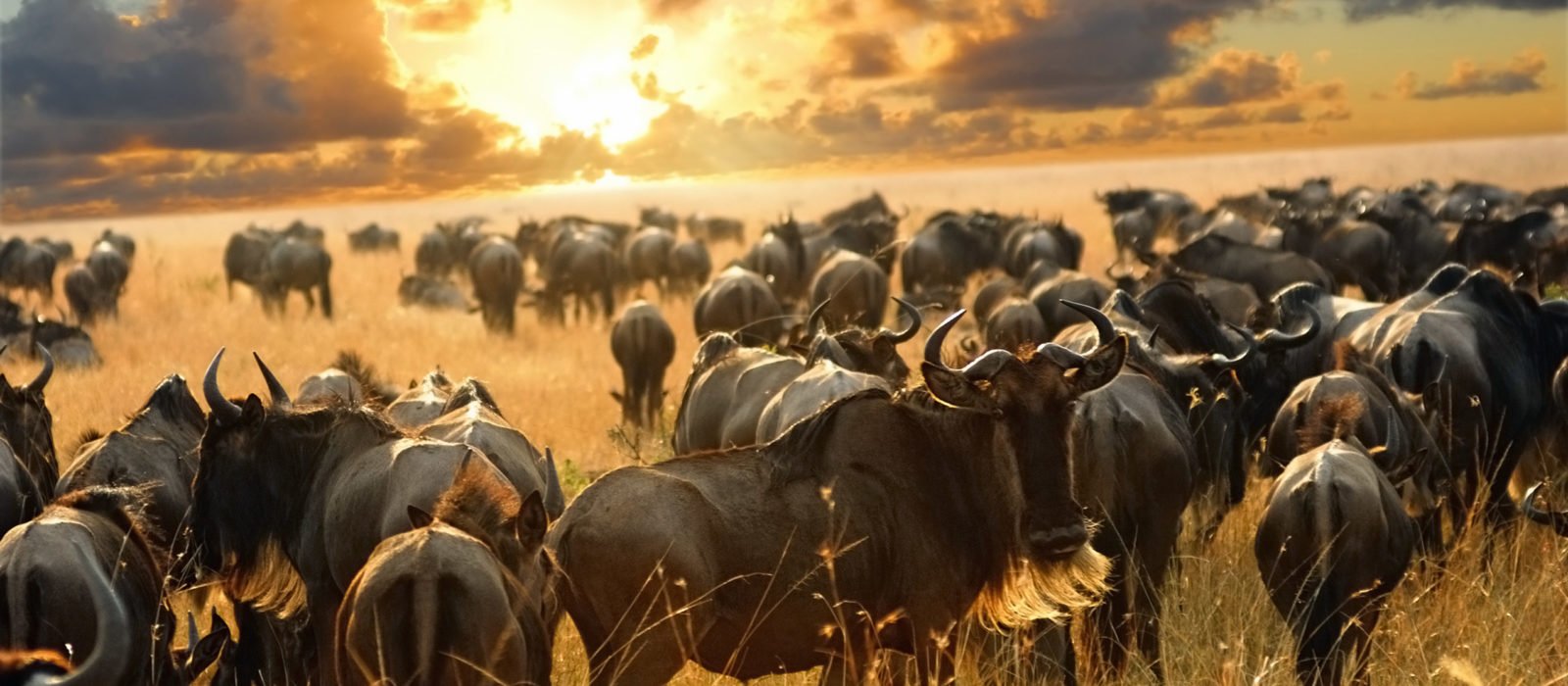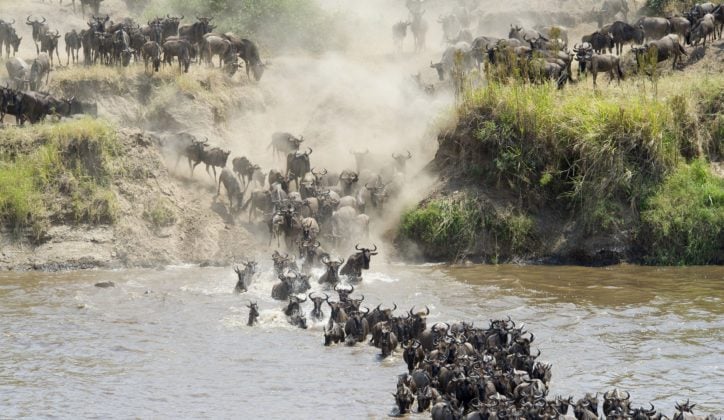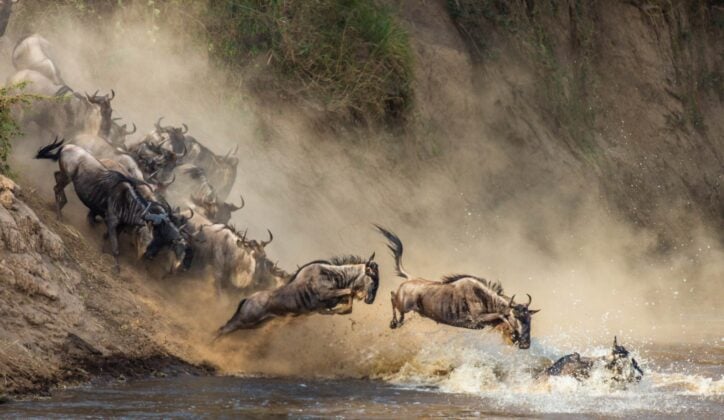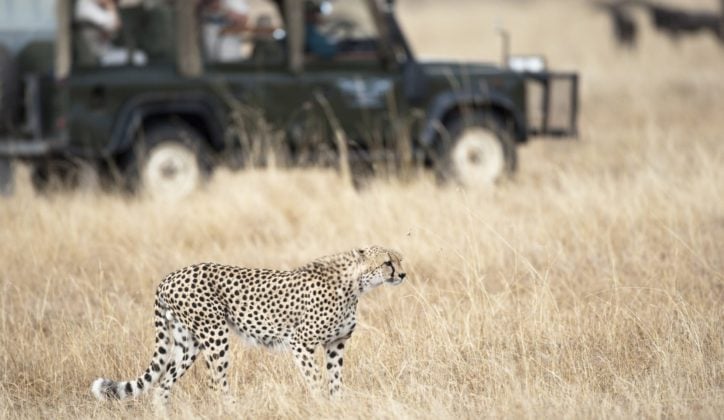Published on: October 3rd, 2017
Last modified: July 27th, 2023
Throughout the year, the wildebeest herds travel around Tanzania’s Serengeti National Park.
From when to travel to where to stay, we answer all your questions about how best to witness the ‘Greatest Show on Earth’.
This is our ultimate guide to the perfect Great Migration safari.

"A once-in-a-lifetime safari"
The Great Migration is undoubtedly one of the world’s most incredible natural occurrences. It’s a once-in-a-lifetime safari that you need to get right first time – and that’s where Jacada Travel come in.
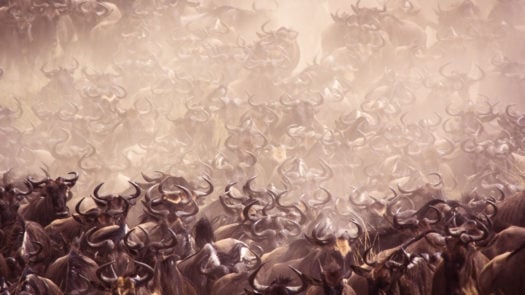
Around 1.5 million wildebeest, 400,000 zebra and 200,000 gazelle embark on a relentless migration that sees them following the rain throughout the year, travelling in a clockwise direction around Tanzania’s Serengeti National Park and Kenya’s Maasai Mara Game Reserve.
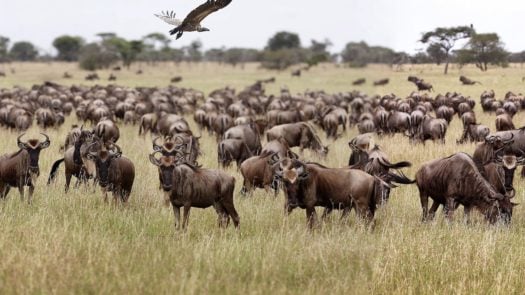
The herds spend the first part of the year in the south east Serengeti where they feed and give birth. As the land dries up, they are forced to move on and embark on the most dangerous part of their journey, thundering through the plains, crashing across rivers and escaping the jaws of hungry crocodiles to reach the fertile pastures of the Maasai Mara in Kenya. No wonder the migration is often referred to as the ‘Greatest Show on Earth’.
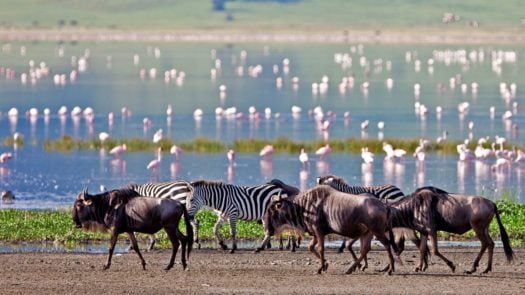
A migration safari should be on everyone’s bucket list, but make sure you do it properly. Let us give you the best advice for witnessing this phenomenal spectacle. Read through this guide for an overview and then get in touch with us to go through the details of this trip of a lifetime with one of our safari experts.
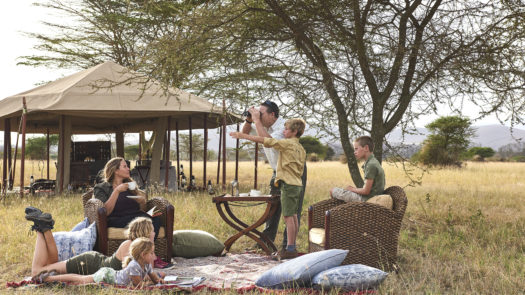
The Mara River crossing was almost a private viewing.
Our guide, Robert, knew everything. Certainly about the wildlife but he also enriched our experience through his knowledge of his country, the culture, history, traditions, the Maasai and politics. Our tented camp was beautiful and had a wonderful charm. Of course it was luxury camping, but we still felt like we were staying out in the Serengeti in the wild. The whole experience was magical, from the noises at night and the fresh air to the fact that beyond the undefined borders of the camp there was nothing but wildlife. Unforgettable!
L & A Smetherham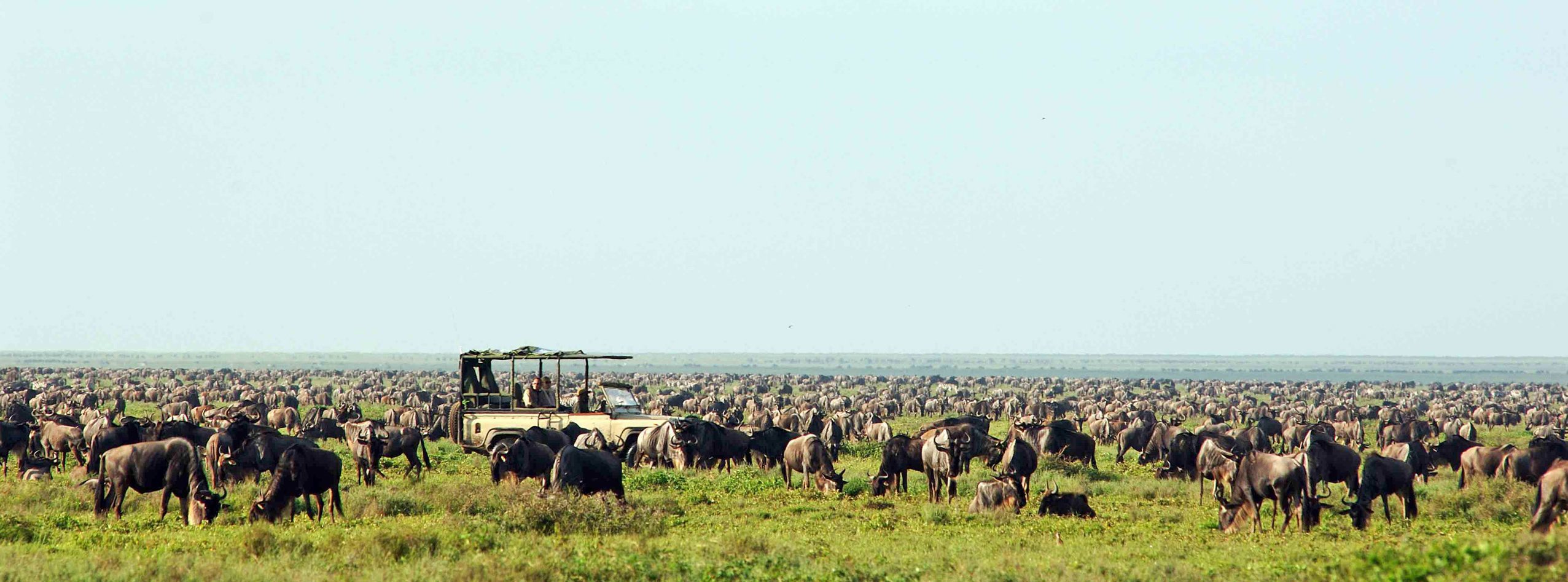

When to see the Great Migration
In Tanzania, you can see the migration throughout most of the year; exactly when you travel will depend on what you want to see. The only time we advise people not to travel is April and May, when both Tanzania and Kenya experience a long rainy season.
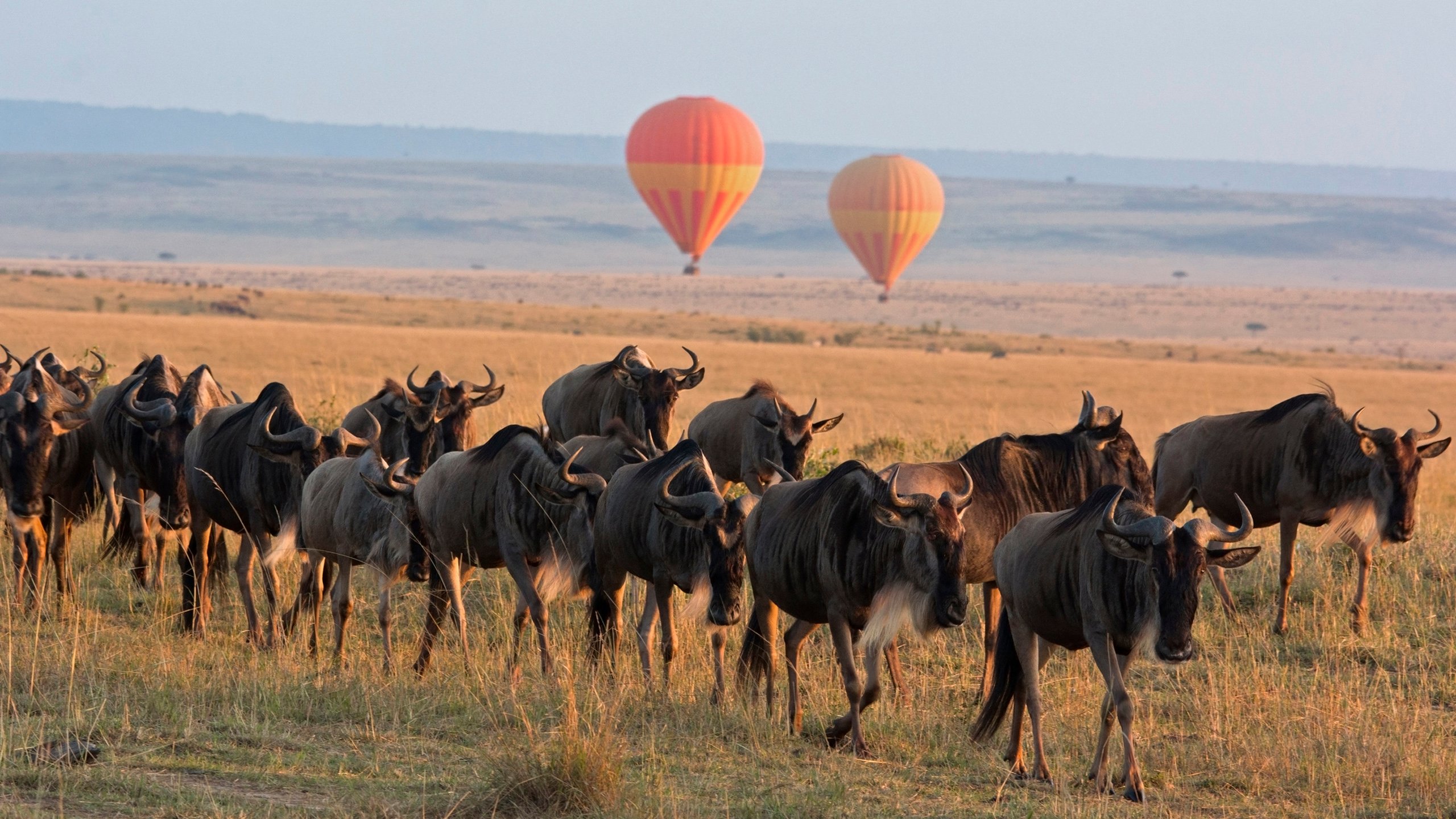
Wildebeest give birth
Wildebeest give birth in the grasslands of the Serengeti, Tanzania, around the month of February. Around 300,000 calves are born each year, as the herds move around the south east Serengeti, munching the nutrient-rich grass. The short grass also means they are safer from predators.
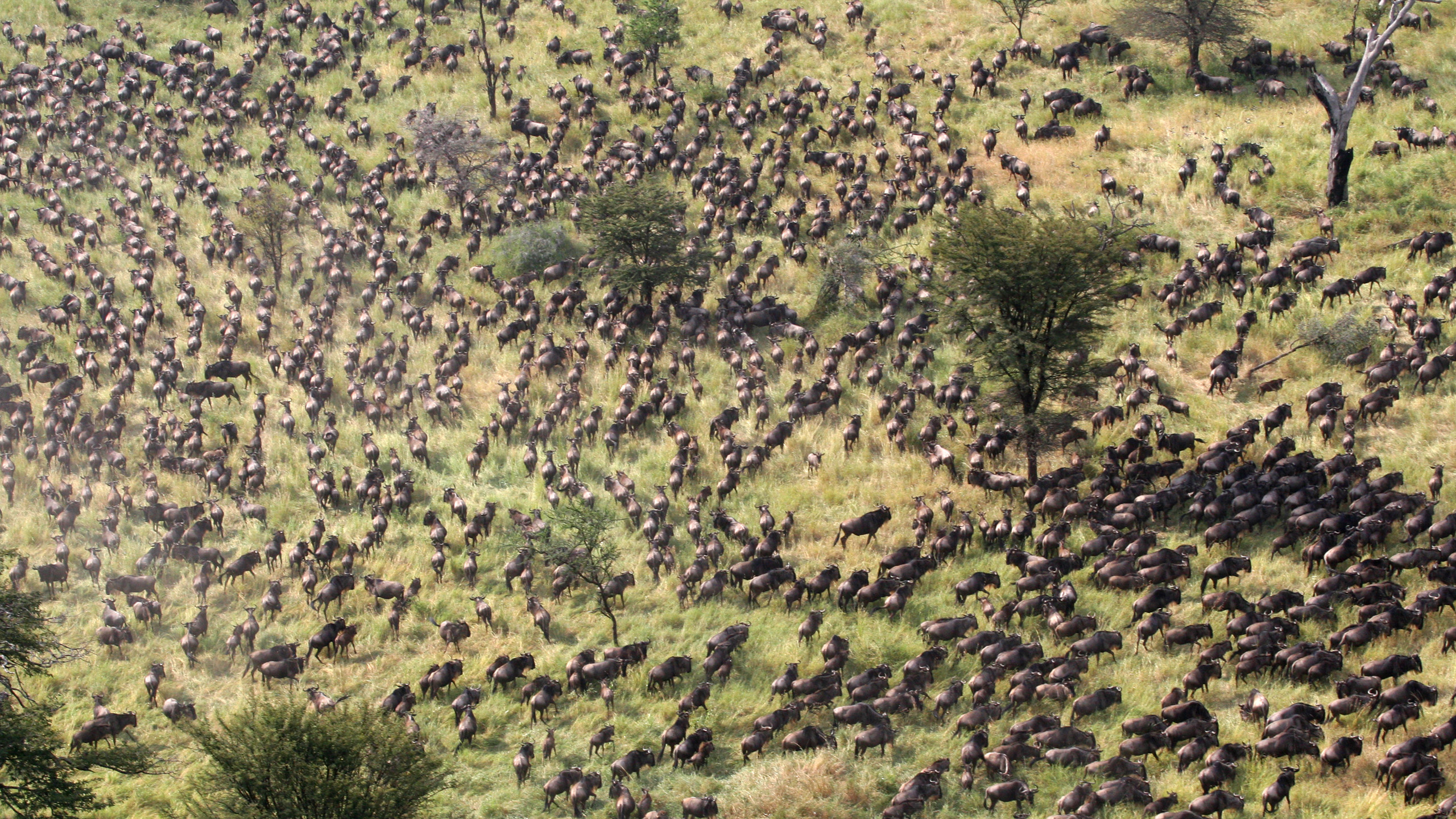
Travel begins
The Serengeti begins to dry up. The wildebeest start to travel north, up through the Grumeti Private Reserve towards the Maasai Mara, where it is starting to rain.
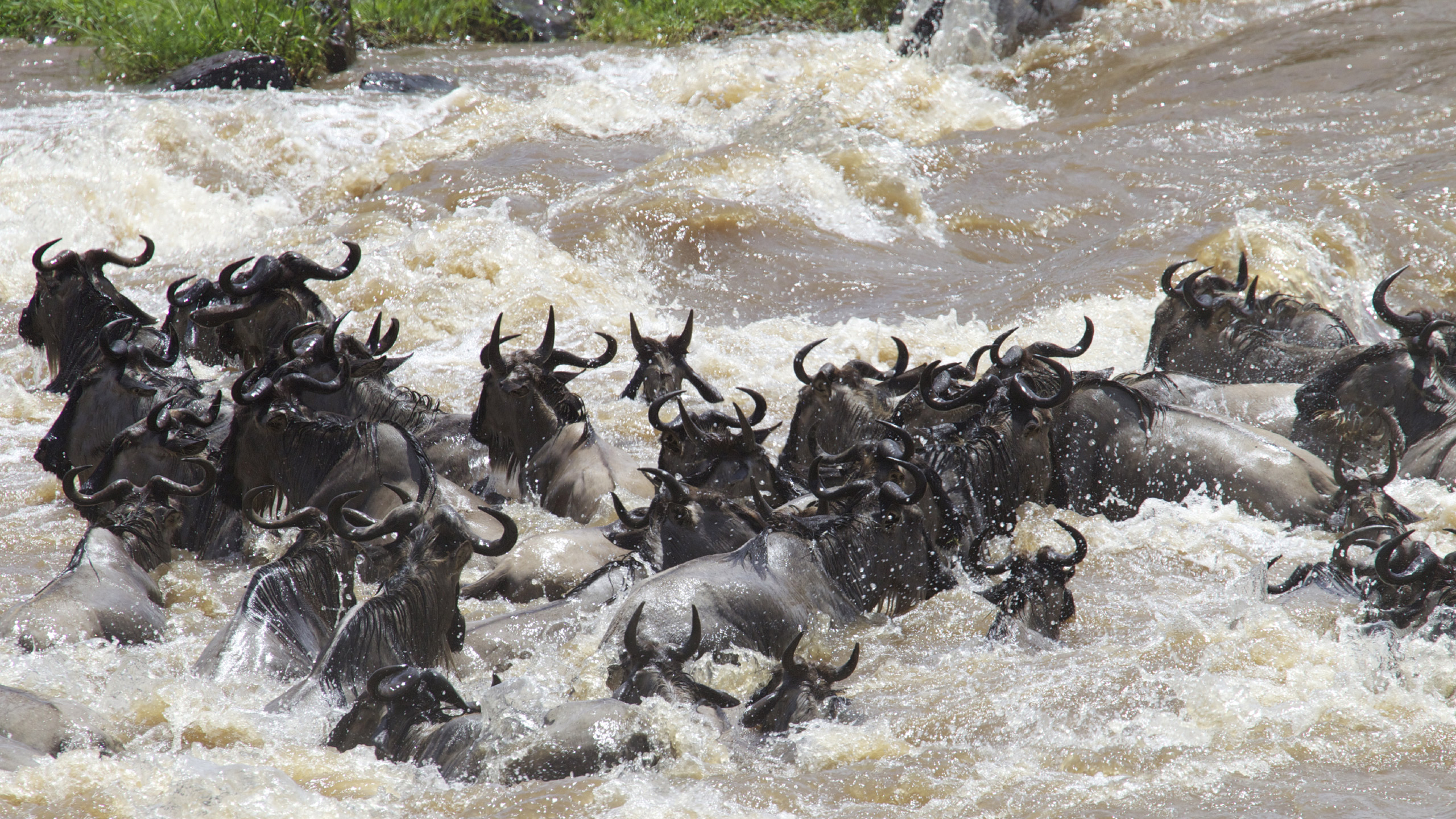
Peak season
From August until October is when most river crossings take place and is the peak season for migration safaris. The herd have to traverse the Mara River, as they cross the border from Tanzania and into Kenya’s Maasai Mara National Park. During August and September, the herds will mainly be in Kenya.
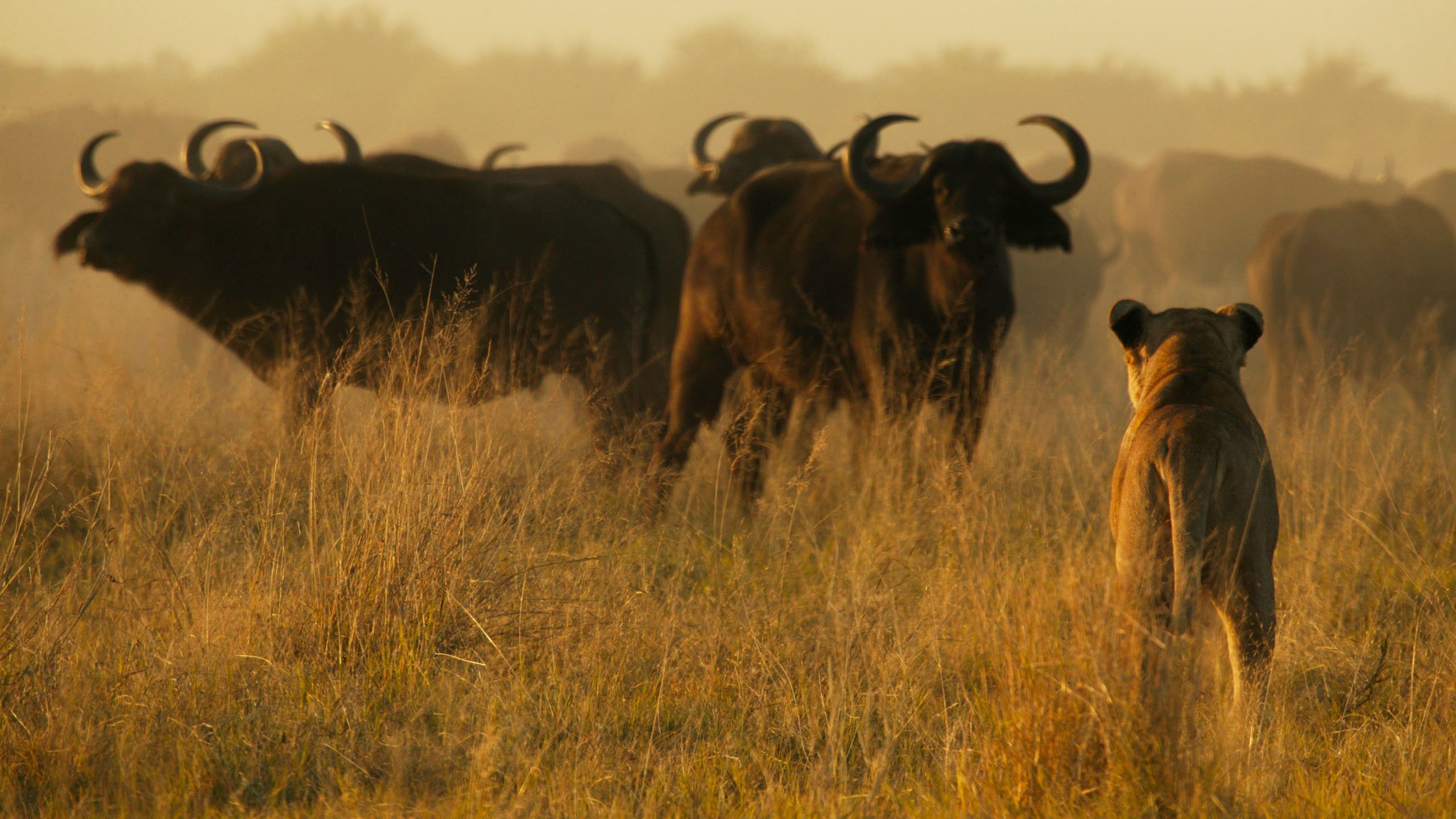
Return southwards
The herd starts to move south and curve back into Tanzania, once again following the rain. Although we know roughly the route of the migration, it cannot be predicted: the wildebeest follow the rain and the weather is an unreliable force of nature. Exactly when they will reach a certain point is not an accurate science and there are also several ‘splinter herds’ that take off from the main group.

What are the benefits to seeing the migration in Tanzania?
1. Tanzania’s Serengeti is much, much quieter than the Maasai Mara. Here, you could have a river crossing or migration sighting all to yourself, perhaps shared with one other vehicle.

2. The wildebeest spend the majority of their year in Tanzania, so there is much more flexibility when planning your safari; the wildebeest are only in Kenya’s Maasai Mara during August and September.
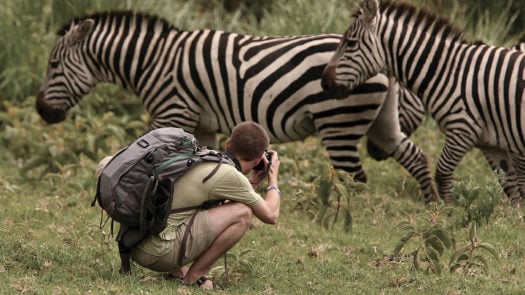
3. The lodges and camps in Tanzania are some of the finest and most exclusive in eastern Africa. We can find the best ones to suit your tastes and to give you the greatest opportunity for spotting the migration.
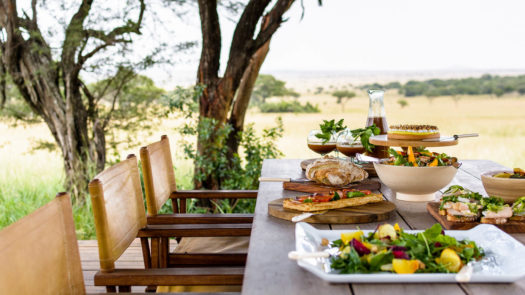
4. There’s so much to do in Tanzania besides witnessing the migration. We always recommend you pair a migration safari with a different part of the country, whether it’s the Ngorongoro Crater or a Zanzibar beach break.
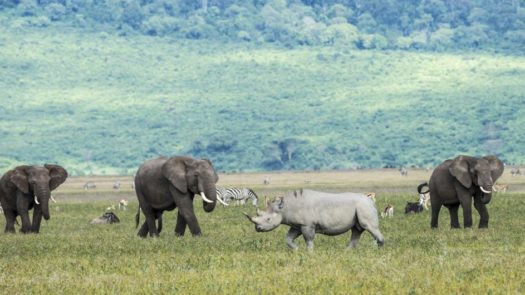

Where to stay to see the Great Migration
Mobile camps
Due to the unpredictable nature of the migration, a mobile camp is by far the best accommodation option for at least part of your trip. Mobile camps are the ultimate in detox safaris: with no WIFI and electricity, you’re forced to switch off your phone and get some one-on-one time with nature.
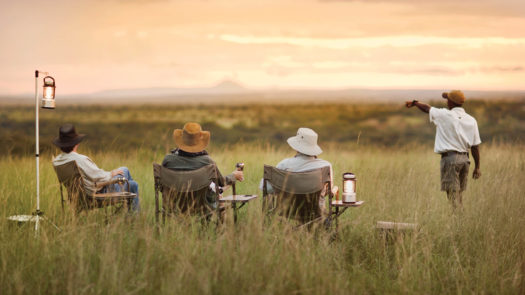
Whilst the camps are far from basic – with Persian rugs and four-poster beds – they won’t be the luxurious accommodation you’d usually expect. However, the value of mobile camps is that they base themselves wherever the herds happen to be, so you’re almost guaranteed a migration viewing.
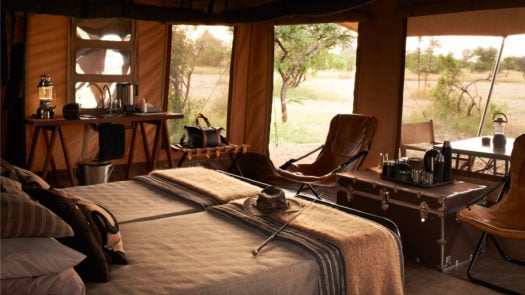
Many of the tented camps are available on a private-use basis, too. Which mobile camp you book will depend on what time of year you’re travelling and what you hope to see. Get in touch with us for our recommendations.
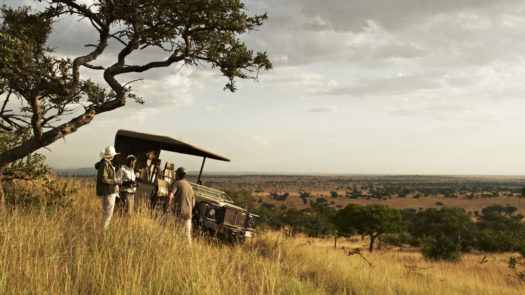
Pick two bases
We suggest you pick two bases and split your time across the two locations, thus increasing your chances of seeing the migration and river crossings. Our favourite combination is a mobile camp followed by a luxurious lodge.
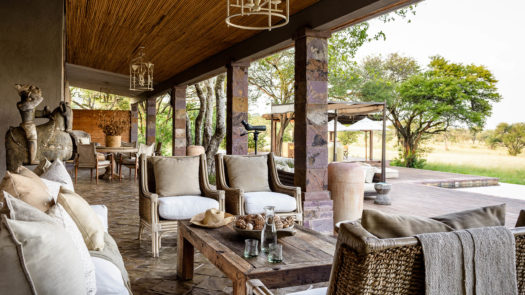
This way, you can track the migration in camp, during which time you’ll have the best chance of seeing the herds, and then spend the next couple of days relaxing at your lodge, with some game drives to visit the wildebeest at a different stage of their journey.


Will I be able to see a river crossing?
River crossings are the most popular part of the migration, due to the high drama made famous by various National Geographic documentaries. The wildebeest must cross the Mara River on their journey from Tanzania’s Serengeti to Kenya’s Maasai Mara.
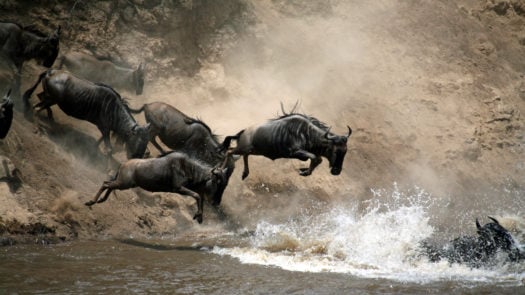
It’s a perilous passage that sees many of the herd lost to the crocodiles that lurk in wait. For that reason, do bear in mind that whilst a river crossing will always be a dramatic and exciting affair, it might not be particularly pretty.
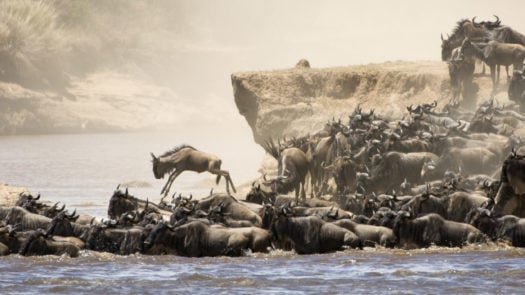
You can see a river crossing if you’re travelling around the Tanzania-Kenya border from August to October. However, even if you arrive at a river exactly as the herds gather on the bank, they might simply stand there for a couple of days, nervously waiting for the first wildebeest to make the jump.
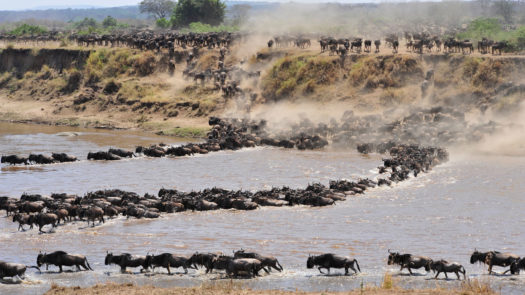
The animals know that predators lurk in and around the river and they’re instinctively scared of water, so they are always reluctant to cross; sometimes the wildebeest may gather on a bank in their thousands before deciding to walk away and find a different crossing point.
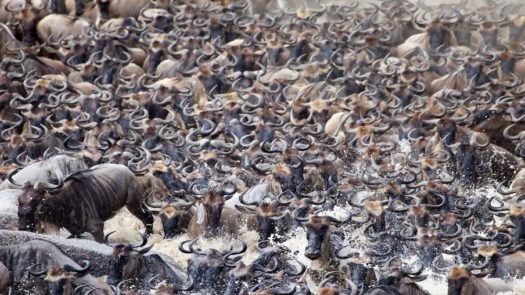
However, travelling around the correct time of year, booking with our experts, and staying in mobile camps will hugely optimise your chances of seeing the huge herds of wildebeest crash across the river.
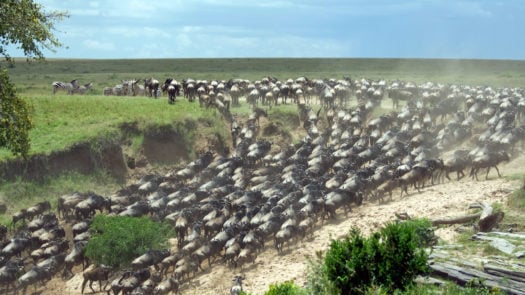

What else can I see and do in Tanzania?
Tanzania is a vast country with much to offer its guests. We always advise our clients to combine their migration safari with other Tanzania destinations. The Ngorongoro Crater – a huge volcanic crater, about 20km across and an important conservation area – is a must-see in Tanzania and is very close to the Serengeti, making it an easy addition to your itinerary.
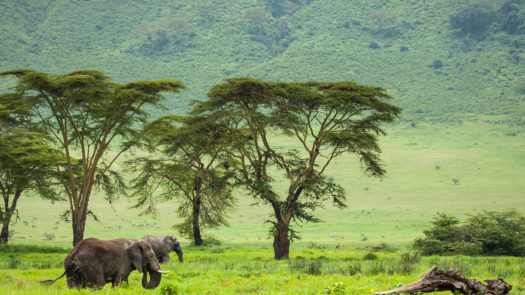
You can visit the flamingo haven Lake Manyara, spot elephants on a walking safari in Tarangire National Park or – if you’re feeling up to the challenge – attempt to take on the mighty Mount Kilimanjaro, Africa’s highest peak. Zanzibar‘s beaches are undoubtedly amongst the best in Africa and a stop on these beautiful shores is the perfect way to round off a safari holiday.
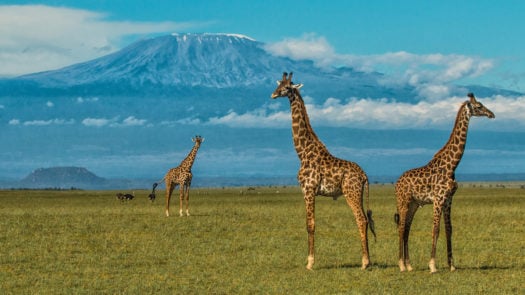

How can I plan my migration safari?
Our Africa Safari Designers were all brought up in Africa and have been on more safaris than they can count. We create bespoke luxury safaris crafted for your individual needs and using our own first-hand experience to recommend locations, lodges and camps that we know you’ll love.
These are some of the ways our experts will make sure your Great Migration safari is a trip of a lifetime:
– We’ll make sure you avoid the crowds.
– Find the best camps and lodges for your requirements, time restraints and budget.
– Great advice on when to travel.
– Have the best guides accompany you.
– We have on-the-ground information about where the herds are throughout the year.
– Get first-hand advice on following the migration and what to expect from Jacada’s experts who have experienced it themselves.
Our top example trips to see the Great Migration
Talk to one of our expert travel designers and start creating your once-in-a-lifetime adventure to see the Great Migration.
